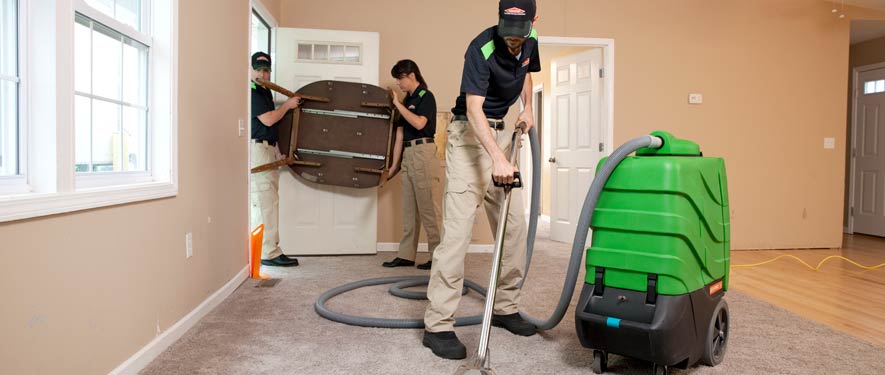
Step 3: Water Removal / Water Extraction
Eliminating Excess Moisture
Once our team has been contacted and conducted a thorough assessment of your property's water damage, they can begin the next step: extracting the water. When standing water is left unaddressed for a period of time, it can deteriorate into a more hazardous water classification, plus it increases the likelihood of mold growth. To mitigate these problems, our technicians will remove water by using powerful pumps and truck-mounted vacuum units, which can extract hundreds or thousands of gallons of water from your Unifour-area home.
Our technicians' first priority is to prevent your property's water damage from causing further damage. The extraction process is a crucial step in ensuring that doesn't happen!
Move-Out / Pack-Out
If your home requires extensive restoration or cleaning, SERVPRO of Alexander, Caldwell, Burke and Catawba Counties can conduct an organized, efficient move-out to protect your belongings from further damage.
- Move-Out Service
Emergency Water Removal
Our highly trained technicians will begin the water removal process almost immediately. Depending on the amount of water, we may use powerful submersible pumps in addition to industrial strength, wet/dry vacuums. Removing most of the water helps reduce drying time and helps prevent secondary water damage and mold and bacterial growth.
- Remove Excess Water
- Use Submersible Pumps and Industrial Wet/Dry Vacuums
Inspect the Carpet Pad and Carpet
We inspect the carpet and pad and determine if they should be removed to protect the subfloor.
- Inspect Carpet Pad and Remove If Needed
- Inspect Carpet and Remove If Needed
Water Removal Equipment
- Moisture detectors, hygrometers, and other meters measure the extent of moisture saturation.
- Infrared cameras may be used to find “hidden” water behind walls and ceilings.
- Submersible and gas-powered pumps are used for continuous pumping of high-level water.
- Truck-mounted and portable extraction units perform efficient water removal.






 24/7 Emergency Service
24/7 Emergency Service


